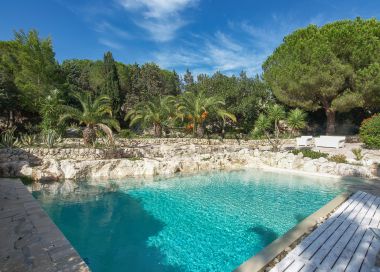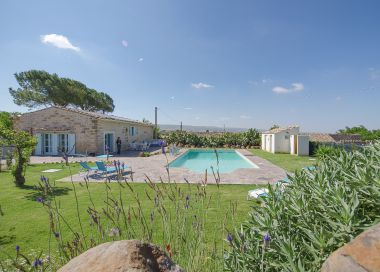Neapolis Archaeological Area, Ear of Dionysus and Greek Theater
Archaeological Park of Neapolis in Syracuse, the Greek theatre, the latomie and the ear of Dionysius
The archaeological area of Neapolis (Neapolis from the Greek "New City"), located in the north-western part of Syracuse, is a fantastic palimpsest of the history of ancient Syracuse and represents the fundamental nucleus of the Archaeological Park which extends for about 240,000 sqm.. It, the result of a long and difficult work of safeguarding in the 1950s, contains not only the most monumental part of the city, but also a dense series of testimonies from various eras, from the protohistoric to the late antique and Byzantine age.
Created by the Superintendency of Eastern Sicily (Superintendent Luigi Bernabò Brea) with the economic funds of the Fund for the South between 1952 and 1955, the Park was included in the general master plan of Syracuse by V. Cabianca since it was intended to enclose all the wonderful monuments in a single site to prevent urban expansion from affecting its structure and value. In fact, from the 1950s to the 1980s, the city of Syracuse underwent such a sudden and accelerated demographic increase that many countryside areas became intensely built-up, including houses built on necropolises, baths and temples. Thanks to the work of Cabianca, the Archaeological Park could not be touched.
The Park is located on the small mountain relief called Colle Temenite: to the south, there are the first monuments of Neapolis; to the north are the latomies dug into the rock of this hill. Among the countless monuments we find:The Church of San Nicolò ai Cordari: built in the Norman era and the place where, in 1093, the funeral of Giordano d'Altavilla, Count of Syracuse, was celebrated. Today it represents the entrance to the Park and is the seat of the information office;
The Roman Pool: located under the Church, these are natural water pipes that were used to supply water to the Roman amphitheatre and start the nautical games;
The Roman Amphitheater of Syracuse: largely dug out of the rock and brought to light in 1839, it has monumental dimensions: 140 m long and 119 m wide. It has two entrances and is served by an articulated system of stairs. Around the arena, the cavea (set of steps) has a high podium behind which there is a covered corridor for what was once the entrance of the gladiators and beasts.
In the northern part of the hill, we find the latomie which, probably already excavated in the 5th century BC. and used since Roman times, they are stone cavities that were used either as quarries or as prisons: cold in winter and hot in summer, being imprisoned in the latomie was equivalent to a death sentence. Prisoners were left to die of hunger and starvation with no possibility of escape. Among the various, we mention:
The Latomia del Paradiso: located in the westernmost part, it is the largest in Neapolis and can only be partially visited as some points are closed and not accessible. In some places, it reaches depths of 45 metres. It includes large cavities called the Ear of Dionysius, Grotta dei Cordari and Grotta del Salnitro.
Particular attention deserves the Ear of Dionysius cavity whose name was given to it by Caravaggio. It is said that from inside the latomia the tyrant Dionysius I of Syracuse secretly heard what his prisoners were saying therefore, given its history and its shape similar to an auricle, Caravaggio thought well that the name really fit perfectly.
The Latomia di Santa Venera: located in the easternmost part, it is known for its cultivated garden since the eighteenth century. Here there is the huge Ficus delle Pagoda, better known by the locals as the "secular tree". Normally, these trees do not reach great heights with the exception of this Syracusan specimen, which shows that it has found a suitable climate to reach its considerable height.
Finally, how not to mention the alleged "Tomb of Archimedes". After the Latomia of Santa Venera, you reach the Grotticelle Necropolis and that of "Archimedes" is the most majestic tomb of all. Precisely because of its majesty, the population believed for a very long time that the tomb could only belong to the most illustrious Syracusan of all time. Sadly, that's not the case. It has been dated to the Roman Imperial period many centuries after the time of Archimedes. Finally, inside, cinerary urns were found and the Syracusan Sicilians did not have the custom of ashes but rather of burial.















